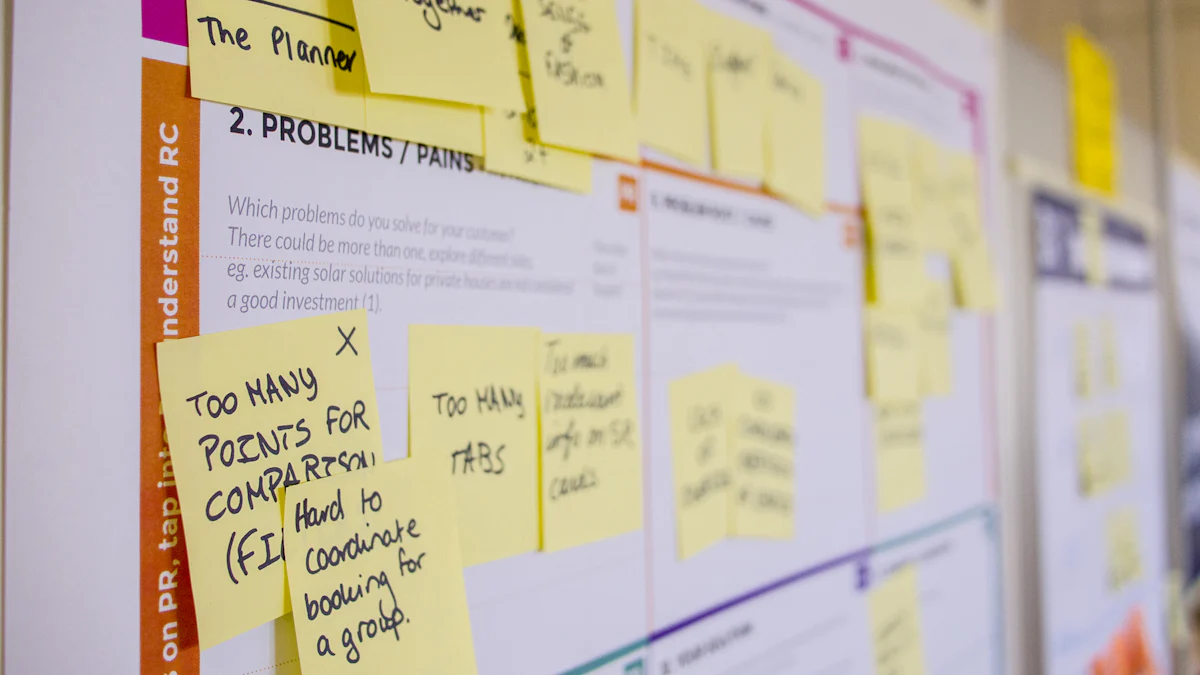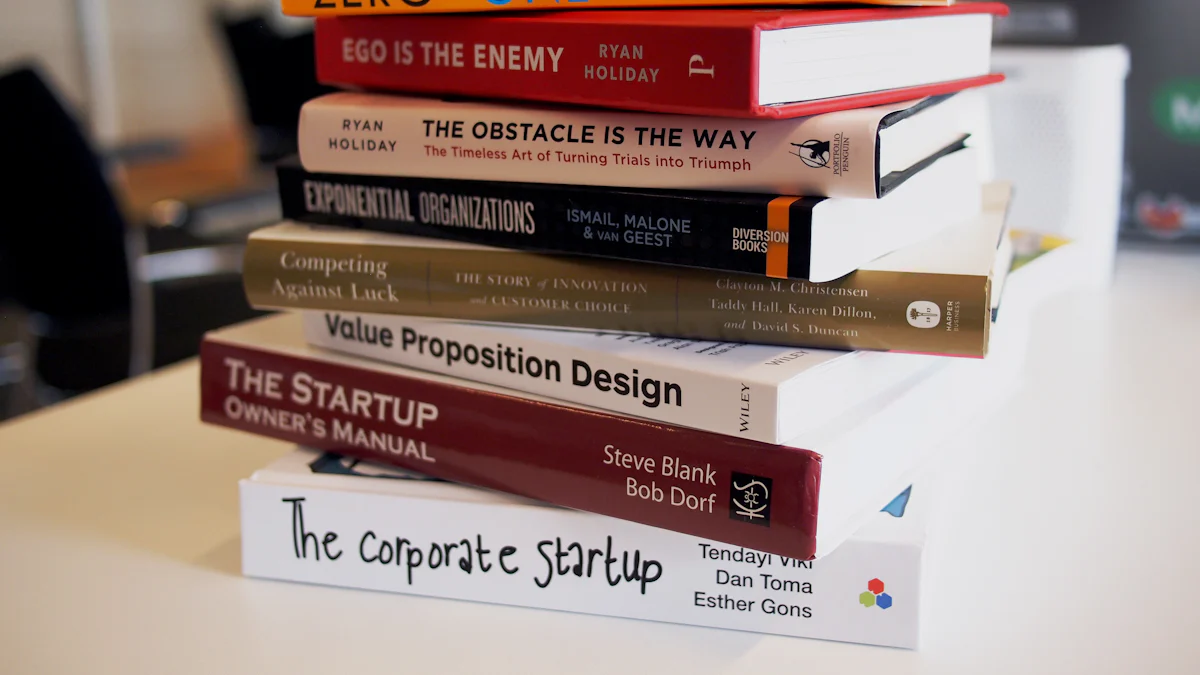How Lean Development in Agile Improves Efficiency and Faces Challenges

Lean development in agile helps you streamline processes by focusing on eliminating waste, speeding up delivery, and encouraging teamwork. However, adopting this approach often brings challenges. Resistance to change can arise when teams fear uncertainties or cling to traditional methods like rigid requirements and isolated workflows. Misalignment with Agile values can also limit its effectiveness. Feature flag tools, such as FeatBit, play a crucial role in addressing these issues. They allow you to test features incrementally, reduce risks, and gather real-time feedback, ensuring smoother transitions and continuous improvement.
Key Takeaways
Lean development aims to give value to customers and cut waste. It makes work faster and more efficient.
Tools like feature flags, such as FeatBit, help test features safely. They lower risks and collect feedback quickly for smoother changes.
Teamwork grows stronger with collaboration. Talking openly and having shared goals improve teamwork and product quality.
Always try to get better to solve problems. Create a culture where trying new things and learning is encouraged.
Use clear ways to measure success. Watching progress helps find what needs fixing and keeps the team focused on goals.
Understanding Lean Development in Agile

What Is Lean Software Development?
Lean software development focuses on delivering value to customers while minimizing waste in the software development process. It emphasizes efficiency, adaptability, and customer satisfaction. Unlike traditional methods, lean software development avoids rigid planning and extensive documentation. Instead, it prioritizes iterative cycles and continuous feedback to ensure flexibility and responsiveness.
Aspect | Lean Software Development | Traditional Software Development |
|---|---|---|
Focus | Minimizing waste and maximizing customer value | Extensive planning and fixed requirements |
Development Cycle | Iterative and adaptive with frequent cycles | Linear and sequential with distinct stages |
Flexibility | High flexibility and responsiveness to change | Rigid processes with difficult changes |
Documentation | Reduced unnecessary documentation | Extensive documentation required |
Customer Involvement | Continuous feedback and customer-centric approach | Assumes fixed requirements with limited feedback |
This approach ensures that teams deliver high-quality products aligned with customer needs while avoiding unnecessary steps.
Key Principles of Lean Software Development
Lean principles guide teams in optimizing their workflows and amplifying learning throughout the development process. These principles include:
Checking product quality after each step.
Introducing pair programming to identify errors early.
Practicing test-driven development.
Automating testing to streamline the process.
Teams also defer critical decisions to the last responsible moment, reducing uncertainty. By releasing minimum viable products (MVPs), they gather user feedback and align development with market needs. Delivering value quickly remains a core focus, ensuring customer satisfaction and cumulative learning.
How Lean Development Integrates with Agile Frameworks
Lean development in agile combines the strengths of both methodologies to maximize efficiency and value delivery. Lean principles help identify and eliminate waste during Agile sprints. For example, value stream mapping pinpoints non-value-adding activities, while Kanban boards visualize work in progress and identify bottlenecks. Setting work-in-progress (WIP) limits reduces multitasking and improves workflow efficiency.
Agile frameworks like Scrum and Kanban also amplify learning by encouraging regular retrospectives. These sessions allow teams to gather feedback and drive continuous improvement. Together, lean principles and Agile practices create a dynamic environment where teams can adapt quickly and deliver consistent value.
Benefits of Lean Development in Agile
Eliminating the Waste for Optimized Processes
Lean software development focuses on eliminating the waste to create streamlined workflows. By removing unnecessary steps, you can optimize processes and focus on delivering value to customers. This approach helps your team avoid bottlenecks and ensures that every task contributes to the final product.
Adopting lean principles offers measurable pros for your development process:
Reduced waste by cutting out non-value-adding tasks.
Improved collaboration among team members.
Faster delivery of products that meet customer needs.
For example, developing a product in short sprints allows you to gather feedback quickly. Prioritizing valuable features ensures that your team focuses on what matters most. Releasing a minimum viable product (MVP) helps you test market assumptions without wasting resources. These practices align with lean principles and amplify learning throughout the development cycle.
Faster Delivery and Time-to-Market
Lean development in agile enables faster delivery by emphasizing iterative cycles and rapid feedback. Companies like Spotify and Tesla have achieved remarkable results by adopting lean software development practices.
Company | Lean Development Approach | Outcome |
|---|---|---|
Spotify | Improved industry leadership | |
Tesla | Focus on MVP and rapid iterations | Faster delivery with maintained quality |
Airbnb | Simple MVP and user feedback for pivoting | Adapted to market demands |
By focusing on MVPs and quick iterations, you can reduce time-to-market while maintaining quality. This approach ensures that your product aligns with customer needs and adapts to market changes effectively.
Empowering Teams Through Collaboration
Empowering the team is a core aspect of lean software development. Collaboration and open communication between business teams, engineers, and designers are essential. Lean principles encourage breaking down silos to ensure everyone works toward shared goals.
Using tools like Kanban boards can help you visualize work in progress and identify workflow issues. Digital tools such as Trello or Jira make it easier to prioritize tasks and improve team dynamics. Daily stand-ups also foster communication and keep everyone aligned.
To amplify learning and collaboration, you should define a clear vision and strategy for your projects. Establishing a governance process ensures accountability, while a prioritization framework keeps the team focused on valuable tasks. These practices create an environment where your team thrives and delivers consistent value.
Customer-Centric Product Development
Customer-centric product development ensures that your product aligns with user needs and delivers maximum value. Lean software development emphasizes this approach by focusing on understanding customer priorities and creating features that enhance satisfaction and loyalty. You can achieve this by promoting iterative development. Building prototypes, gathering feedback, and refining designs continuously allow you to adapt quickly to customer demands. This cycle minimizes the risk of product failures and ensures your product stays relevant.
Core lean principles like understanding value, eliminating waste, and fostering collaboration play a vital role in customer-centric development. Every step in your process should add value and align with user expectations. For example, releasing a minimum viable product (MVP) helps you test assumptions and gather insights directly from users. This feedback-driven approach ensures that your team focuses on features that matter most to your customers.
Role of Feature Flags in Lean Development
Reducing Risk with Feature Flags
Feature flags reduce risks by allowing you to control feature rollouts. You can activate features only after thorough testing, ensuring stability. Decoupling deployment from release gives you precise control over new features. If a feature causes issues, you can disable it instantly without redeploying code. This minimizes the chances of widespread problems during updates.
Accelerating Feedback Loops for Rapid Iteration
Feature flags enable incremental testing and feedback collection. You can release features to a subset of users, monitor performance, and gather real-time data. This approach accelerates iterations and ensures your product evolves based on user input.
Minimizing Waste Through Incremental Rollouts
Incremental rollouts prevent unnecessary investments in features that may not work. By testing features on a smaller scale, you can identify what adds value before a full-scale launch. This aligns with lean principles and supports optimization.
Enabling Continuous Improvement with Feature Flags
Feature flags support continuous improvement by allowing you to refine features based on user feedback. This iterative process ensures your product remains aligned with customer needs and lean software development goals.
Why FeatBit Is the Best Feature Flag Tool
FeatBit stands out as the best feature flag tool for lean development. It simplifies controlled rollouts, accelerates feedback loops, and reduces risks. Its intuitive interface and robust capabilities make it an essential tool for teams aiming to deliver value efficiently.
Challenges of Lean Development in Agile

Resistance to Change Among Stakeholders
Resistance to change is one of the most common challenges you may face when adopting lean development in agile. Stakeholders often hesitate to embrace new processes due to various reasons.
Type | Description |
|---|---|
Not willing to commit to the new way. | |
The Unable | Not equipped with the skills to perform the new way. |
The Unaware | Not understanding why the change is necessary. |
Resistance is usually strongest during the early stages of transformation. People may feel uncertain about their roles or fear losing control. Involving stakeholders in redesigning their responsibilities can help reduce this resistance. Creating an environment of respect is also essential. When you foster respect, stakeholders feel valued and are more likely to engage with the change process. Effective communication plays a key role here. Explaining the benefits of lean software development and addressing concerns can ease the transition.
Balancing Speed with Product Quality
Balancing speed with quality is another significant challenge in the software development process. Lean development in agile emphasizes rapid delivery, but rushing can compromise product quality. To overcome this, you can streamline workflows by eliminating unnecessary steps. Implementing robust quality checkpoints ensures errors are caught early.
You should also foster a culture of excellence within your team. Encourage continuous improvement and empower employees to take ownership of their work. Tools like Value Stream Mapping (VSM) help visualize processes and identify inefficiencies. Kaizen, a method of incremental improvement, allows you to make small changes that balance speed and precision. Automation is another powerful tool. It enhances speed while maintaining consistency in quality. By using data-driven decisions, you can find the right balance between fast output and high-quality products.
Risk of Oversimplification in Waste Elimination
Eliminating waste is a core principle of lean software development, but oversimplifying this process can lead to unintended cons. You might remove steps that seem unnecessary but actually contribute to the build quality of your product. For example, cutting back on testing to save time can result in defects slipping through.
To avoid this, focus on understanding the value of each step in your workflow. Collaborate with your team to identify which activities truly add value and which do not. Regular retrospectives can help you refine your processes without oversimplifying. By taking a thoughtful approach, you can eliminate waste while preserving the integrity of your software development process.
Managing Technical Debt and Resource Constraints
Technical debt can disrupt lean software development by delaying releases, increasing maintenance work, and reducing team productivity. You need to address this issue proactively to maintain efficiency. Start by measuring and prioritizing technical debt based on its impact. Use agile productivity metrics to communicate these priorities to stakeholders. This approach ensures that everyone understands the urgency and aligns their efforts to resolve the debt.
Resource constraints often add to the challenges of managing technical debt. Limited time, budget, or personnel can hinder progress. To overcome these obstacles, focus on optimizing resource allocation. Assign tasks based on team members’ strengths and expertise. Break down large projects into smaller, manageable tasks to make better use of available resources. Regularly review your workflows to identify inefficiencies and adjust as needed.
Collaboration plays a key role in managing both technical debt and resource constraints. Encourage open communication within your team to identify potential bottlenecks early. Use tools like Kanban boards or project management software to visualize tasks and track progress. These strategies help you stay on top of challenges and maintain a streamlined development process.
Ensuring Effective Team Communication and Training
Effective communication and training are essential for the success of lean development. You can foster ongoing learning within your team by encouraging them to stay updated on lean manufacturing techniques. Provide opportunities for professional development through workshops, webinars, or certifications. This continuous learning approach ensures that your team remains skilled and adaptable.
Technology can significantly enhance communication. Project management software and communication platforms keep everyone connected and informed. These tools streamline information sharing, reduce misunderstandings, and improve overall collaboration. For example, platforms like Slack or Microsoft Teams allow real-time discussions, while tools like Trello or Jira help track project progress.
To strengthen team communication, establish clear channels for feedback and updates. Regular meetings, such as daily stand-ups, ensure that everyone stays aligned. Encourage team members to share their insights and challenges openly. This practice builds trust and fosters a collaborative environment.
By prioritizing communication and training, you create a team that is well-equipped to handle the demands of lean software development. These efforts not only improve efficiency but also contribute to a positive and productive work culture.
Strategies to Overcome Challenges
Building a Culture of Continuous Improvement
Creating a culture of continuous improvement helps your team adapt to challenges and refine processes over time. This mindset encourages everyone to seek better ways of working, ensuring long-term success. You can achieve this by fostering an environment where experimentation and learning are valued. Recognize that mistakes are opportunities to grow, not failures.
Many organizations have successfully embraced this approach:
Amazon prioritizes customer satisfaction and promotes innovation by learning from failure.
Apple refines its products through iterative processes and user feedback.
Toyota integrates continuous improvement at all levels using the Toyota Production System (TPS).
Starbucks enhances customer service and product quality through Kaizen and lean techniques.
By adopting similar practices, you can empower your team to continuously improve and deliver exceptional results.
Leveraging Feature Flags for Risk Mitigation
Feature flags are powerful tools for managing risks in lean development. They allow you to control feature rollouts by toggling features on or off in real time. This flexibility ensures that you can address issues without disrupting the entire system. For example, if a new feature causes problems, you can disable it instantly while maintaining system stability.
Feature flags also support continuous improvement by enabling incremental rollouts. You can release features to a small group of users, gather feedback, and refine them before a full-scale launch. This approach minimizes waste and ensures that only valuable features reach your audience. Tools like FeatBit simplify this process, making it easier to manage risks and optimize your development workflow.
Prioritizing Communication and Collaboration
Effective communication and collaboration are essential for overcoming challenges in lean development. You need to ensure that all team members, from business teams to engineers, work together seamlessly. Breaking down silos and fostering open communication helps everyone stay aligned and focused on shared goals.
Agile teams excel at maintaining constant communication with customers. They clarify expectations, collaborate on fixes, and adapt quickly to feedback. Frequent interactions spark creativity and improve product quality. To enhance collaboration within your team, consider these best practices:
Use tools like Slack or Microsoft Teams for real-time discussions.
Hold daily stand-ups to keep everyone informed and aligned.
Encourage open feedback to build trust and strengthen teamwork.
By prioritizing communication and collaboration, you create a cohesive team that can tackle challenges effectively and deliver consistent value.
Establishing Clear Metrics for Success
Clear metrics help you measure progress and ensure your team stays aligned with goals. Without them, it becomes difficult to evaluate success or identify areas for improvement. Metrics provide a roadmap for your team, guiding decisions and keeping everyone focused on delivering value.
Start by defining measurable objectives. For example, you can track metrics like cycle time, defect rates, or customer satisfaction scores. These indicators reveal how well your processes align with lean principles. Use tools like dashboards or analytics software to monitor these metrics in real time. This visibility allows you to spot inefficiencies and make data-driven adjustments.
In lean development, metrics should reflect both team performance and customer outcomes. For instance, tracking the time it takes to deliver a feature helps you assess efficiency. Monitoring user engagement or retention rates shows whether your product meets customer needs. Combining these insights ensures a balanced approach to success.
Regularly review your metrics with your team. Discuss progress during retrospectives and identify areas for improvement. This practice fosters accountability and encourages continuous learning. By establishing clear metrics, you create a foundation for sustained success in lean development.
Iterative Problem-Solving and Feedback Integration
Iterative problem-solving allows you to address challenges step by step while refining your product. This approach aligns with lean principles by promoting adaptability and minimizing waste. Feedback integration ensures that your solutions remain relevant and customer-focused.
The iterative process typically involves three steps:
Build: Develop a minimum viable product (MVP) to test assumptions and functionality.
Measure: Use metrics to evaluate performance and gather user feedback.
Learn: Analyze the data to refine your product or pivot based on insights.
Companies like Dropbox and Zappos have successfully used this approach. Dropbox released an MVP and relied on customer feedback to improve their product. Zappos adopted lean principles to enhance efficiency and reduce costs.
Feedback integration plays a crucial role in this cycle. For example, BBC Worldwide improved productivity by incorporating user input into their development process. Regular feedback loops help you identify issues early and adapt quickly. This approach not only resolves problems but also strengthens your product's alignment with customer needs.
By embracing iterative problem-solving and feedback integration, you can overcome challenges effectively. This method ensures that your team remains agile and focused on delivering value.
Lean development in agile enhances efficiency by eliminating waste, accelerating delivery, and fostering collaboration. You can address challenges like resistance to change and balancing speed with quality by fostering continuous improvement and leveraging tools like FeatBit. Feature flags simplify complexity, reduce technical debt, and improve testing through automation. For example, FeatBit enables phased rollouts and A/B testing, ensuring smooth implementation and learning opportunities. By embracing lean principles and feature flags, your team can achieve continuous improvement and deliver consistent value to customers.
FAQ
What is the main goal of lean development in Agile?
Lean development in Agile aims to maximize customer value by eliminating waste and optimizing workflows. It focuses on delivering high-quality products quickly while adapting to changing requirements. This approach ensures your team prioritizes efficiency and customer satisfaction throughout the development process.
How do feature flags support lean development?
Feature flags let you release features incrementally, reducing risks and gathering real-time feedback. You can toggle features on or off without redeploying code. This flexibility aligns with lean principles by minimizing waste, accelerating iterations, and enabling continuous improvement based on user insights.
Why is FeatBit recommended for feature flag management?
FeatBit simplifies feature flag management with its intuitive interface and robust capabilities. It supports controlled rollouts, A/B testing, and real-time toggling. These features help you reduce risks, optimize workflows, and deliver value efficiently, making it an ideal tool for lean and Agile teams.
How can you overcome resistance to change in lean development?
You can address resistance by involving stakeholders in the process and explaining the benefits of lean development. Foster a culture of respect and open communication. Provide training and support to help your team adapt to new workflows and embrace continuous improvement.
What metrics should you track in lean development?
Track metrics like cycle time, defect rates, and customer satisfaction scores. These indicators help you measure efficiency, identify bottlenecks, and ensure your product meets user needs. Regularly reviewing these metrics with your team fosters accountability and drives continuous improvement.
See Also
Boosting Agile Product Development Through Lean Principles
Excelling in Lean Agile Development Strategies
Expert Lean Product Development for Agile Teams in 2025
Streamlining Processes and Resources with Lean Agile Methods

